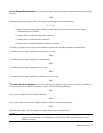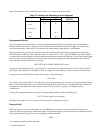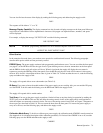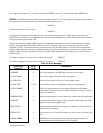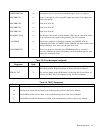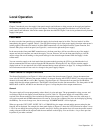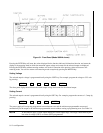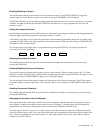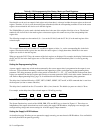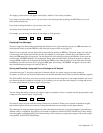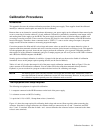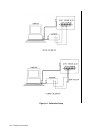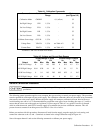
Local Operation 85
Enabling/Disabling an Output
The selected output channel can be turned on and off from the front panel. The OUTPUT ON/OFF key toggles the
selected output on and off. When an output is turned off, the message ''DISABLED" will be displayed.
The OUTPUT ON/OFF key will not affect any other programmed functions nor will it reset an overvoltage or overcurrent
condition. An output disabled by the OUTPUT ON/OFF key will behave as if it were programmed to zero volts and
minimum current.
Setting Overvoltage Protection
Programmable overvoltage protection (OVP) guards your load against overvoltage by crowbarring and downprogramming
the power supply output if the programmed overvoltage setting is exceeded.
A fixed OVP circuit with a trip level about 20 percent above the maximum programmable voltage acts as a backup to the
programmable OVP. When overvoltage protection is activated, the output is shorted and the message ''OVERVOLTAGE"
will appear on the front panel display.
The selected output's overvoltage setting is programmed locally using the OVSET key. For example, program the
overvoltage to 10.5 volts by pressing:
OVSET 1 0 . 5 ENTER
Resetting Overvoltage Protection
The condition that caused the OV must first be cleared and then the output can be returned to its previous state by
pressing the OVRST key.
Enabling/Disabling Overcurrent Protection
The overcurrent protection feature guards against excessive output currents. When the output goes into the + CC mode
and OCP is enabled, the OCP circuit is activated which downprograms the output voltage and disables the output. For this
condition, the message ''OVERCURRENT'' appears on the front panel display.
The selected output's overcurrent protection feature can be turned on and off from the front panel. The OCP key toggles
the selected output's overcurrent protection circuit on and off. When it is on (enabled), the OCP ENBLD annunciator will
be on.
Resetting Overcurrent Protection
The condition that activated the OCP circuit must first be cleared then the output can be returned to its previous state by
pressing the OCRST key.
Displaying the Contents of the Fault Register
Each output channel has a fault register which can be used in conjunction with the status and mask registers to report a
fault condition. A detailed description of these registers is given in Chapter 5. The main points of this description are
repeated below for continuity in explaining how to use the front panel UNMASK and FAULT keys.
The mask register, which is set by the user, is used to specify which bits in the status register are enabled (unmasked) to
set bits in the fault register. A bit is set in the fault register when the corresponding bit in the status register changes from
0 to 1 and the corresponding bit in the mask register is 1. Each output channel has its status, mask, and fault registers
arranged as shown in Table 6-1.



